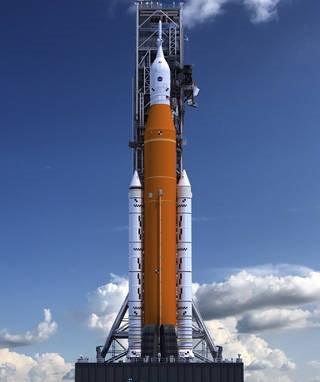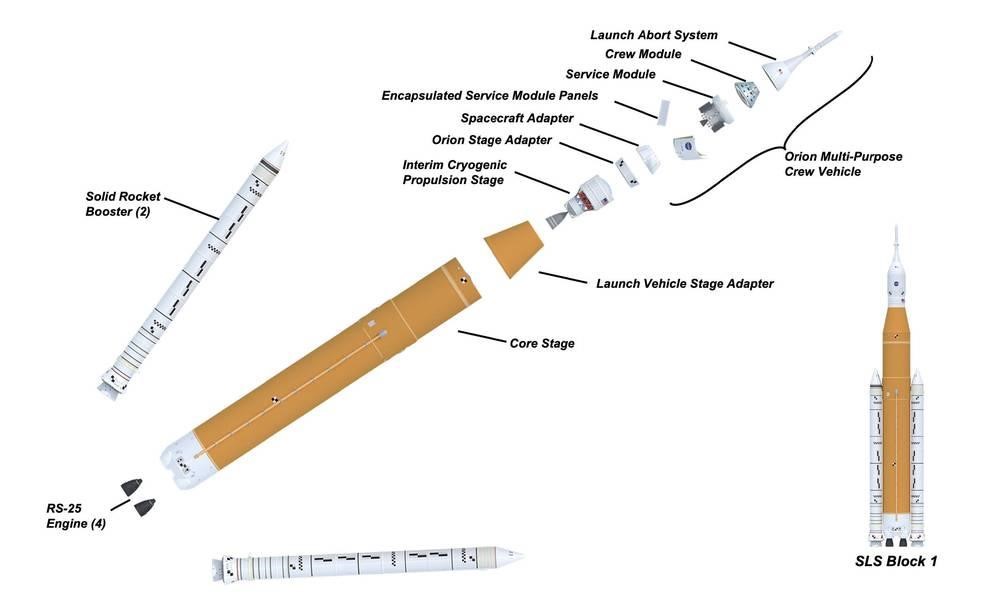
Buzz Lightyear’s statement “ To Infinity and Beyond†is taking a life of its own. Essentially, since the conclusion of the Apollo mission to the moon, the United States has not returned since, for a variety of reasons. Fortunately, just because a project is on pause, doesn’t mean the intention to pursue it won’t manifest eventually. In life, and in rocket launches, timing is everything. With the dawning of a new space era, the emergence of the Space Launch System is one that we all should anticipate. Designed in colours much like the Space Shuttle, the world’s most powerful rocket isn’t gearing us up for the International Space Station, it is actually gearing us up for the moon.
The Space Launch System (SLS) is an engineering marvel to behold. As we embark on a mission to explore beyond the Earth’s orbit, it is only fitting that there be a vehicle that has the capability to do this. Space technology is advancing, and it will be in our favour to understand how the systems have evolved in order to achieve this objective. The SLS has amazing power and capabilities, and is able to carry the Orion Capsule, astronauts, and the relevant cargo to the moon and back.
With a sleek design, the SLS has the ability to carry more payload mass than most rockets to date inclusive of heavy lift vehicles like the Falcon Heavy and the Delta IV rockets. The SLS is a flexible, optimizable machine and in time, there will be capabilities for the optimization of the system for additional payloads, and even scientific missions to other planets in our solar system. The moon is just its starting point. As a comparative vehicle to the Saturn V, the SLS is a modern engineering marvel. With a test mission scheduled for 2021, this vehicle is definitely one to keep in mind as the Artemis missions set forth in 2024 with humans onboard.
Objectives of the SLS
The SLS is designed as a powerhouse of energy, with the ability to fulfill deep space missions. With its power, the Orion Capsule, one of the primary cargo vessels on the vehicle will then make its journey to the moon at a speed of 24,500 miles per hour. Designed with RS-25 engines, the SLS is well equipped to fulfill its purpose. From the image above, you’ll see that the vehicle is designed with solid rocket boosters that will facilitate the propulsion of the system from the Earth to Lower Earth orbit, and enable the rest of the mission to take place from that point forth. The twin boosters are paired with four RS-25 liquid propellant engines in order to achieve the power and motion objectives.
After lift off, the solid rocket boosters will be jettisoned, and the Interim Cryogenic Propulsion Stage (ICPS), will be next in the relay to transport the Orion Capsule on to the Moon. As an engineering system, the SLS will be optimized to its initial launch point in 2021. Subsequent to this, with the more frequent moon missions, the launch and production costs of the vehicle will actually be reduced. Newer, more cost effective versions of the SLS block will be developed, known as Block 2 SLS configurations, after the initial launch configuration is called Block 1. The SLS Block 2 is designed to be much more powerful than the Block 1, and can carry payloads of up to 46 tonnes to space. The Block 1 configuration is outlined below.
Block 1 – Initial SLS Configuration
How will the Artemis 1 Progress?
The Artemis 1 mission will utilize the Block 1 configuration highlighted above. Standing at 322 feet, the unit will produce 8.8 million pounds of thrust. As an uncrewed flight, the Orion spacecraft will launch the Orion Capsule 280,000 miles from the Earth. From this test flight, the SLS team will be able to determine the relevant system performance of the entire SLS unit, and ultimately be able to optimize it for the upcoming missions into the Block 2 configurations and beyond. We currently live in a time that enables rapid innovation in space vehicle design. As an ambitious endeavor, there are several mission rockets being built.
Utilizing proven technology from the Space Shuttle, fortunately the SLS designers did not have to reinvent the wheel when they were designing parts of the SLS. In some instances, the rocket does have a fusion of new and refurbished parts. The SLS core is designed and built by Boeing, along with the relevant avionic components that provide flight control. The RS-25 Engines that power the unit, will be generated by Aerojet Rocketdyne. The two solid rocket boosters for the SLS are provided by Northrop Grumman. As a large team effort, a lot of planning and integration went into the creation of the SLS. Let’s see how the launch unfolds in 2021. It will be an exciting mission.


